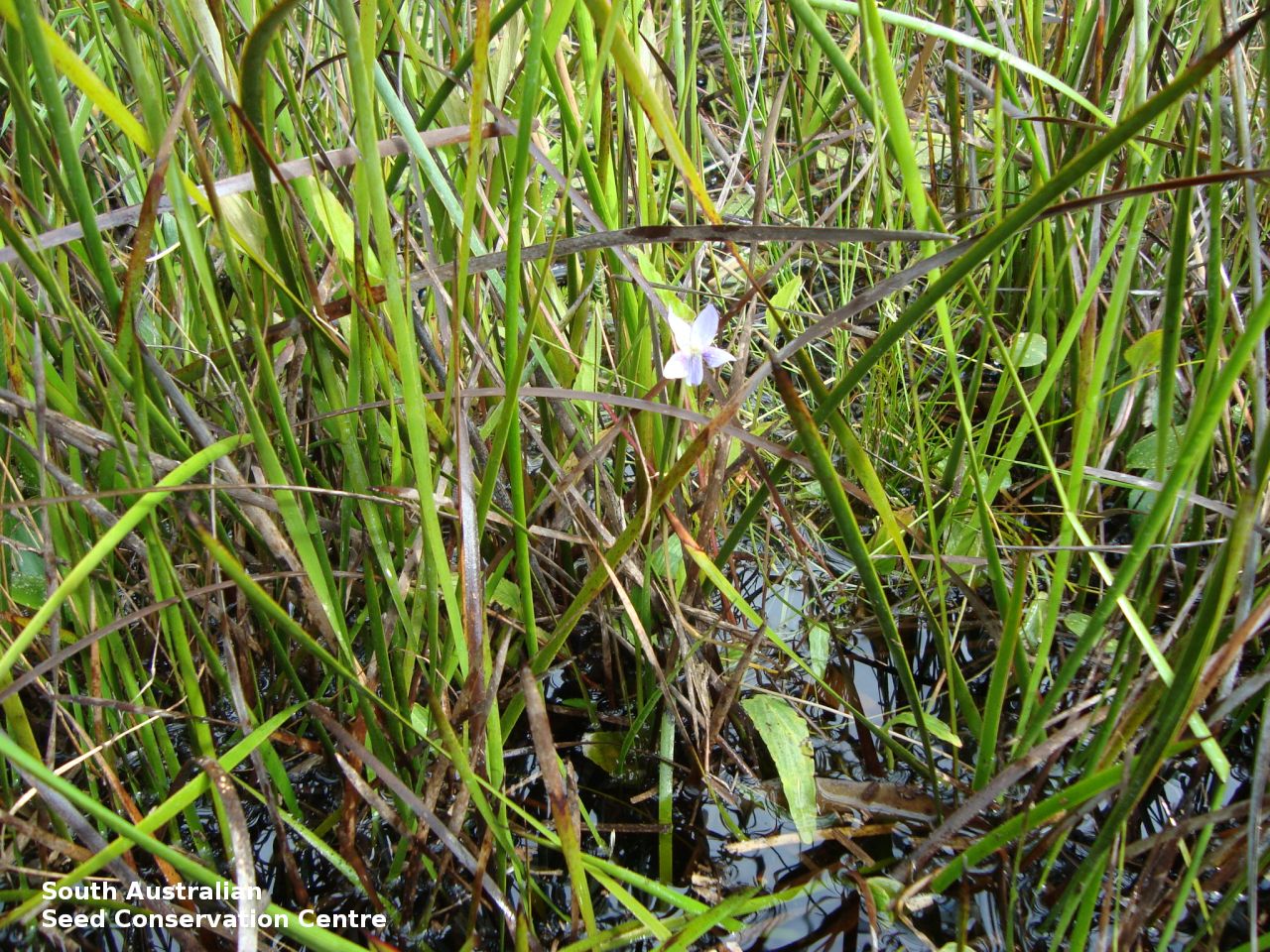
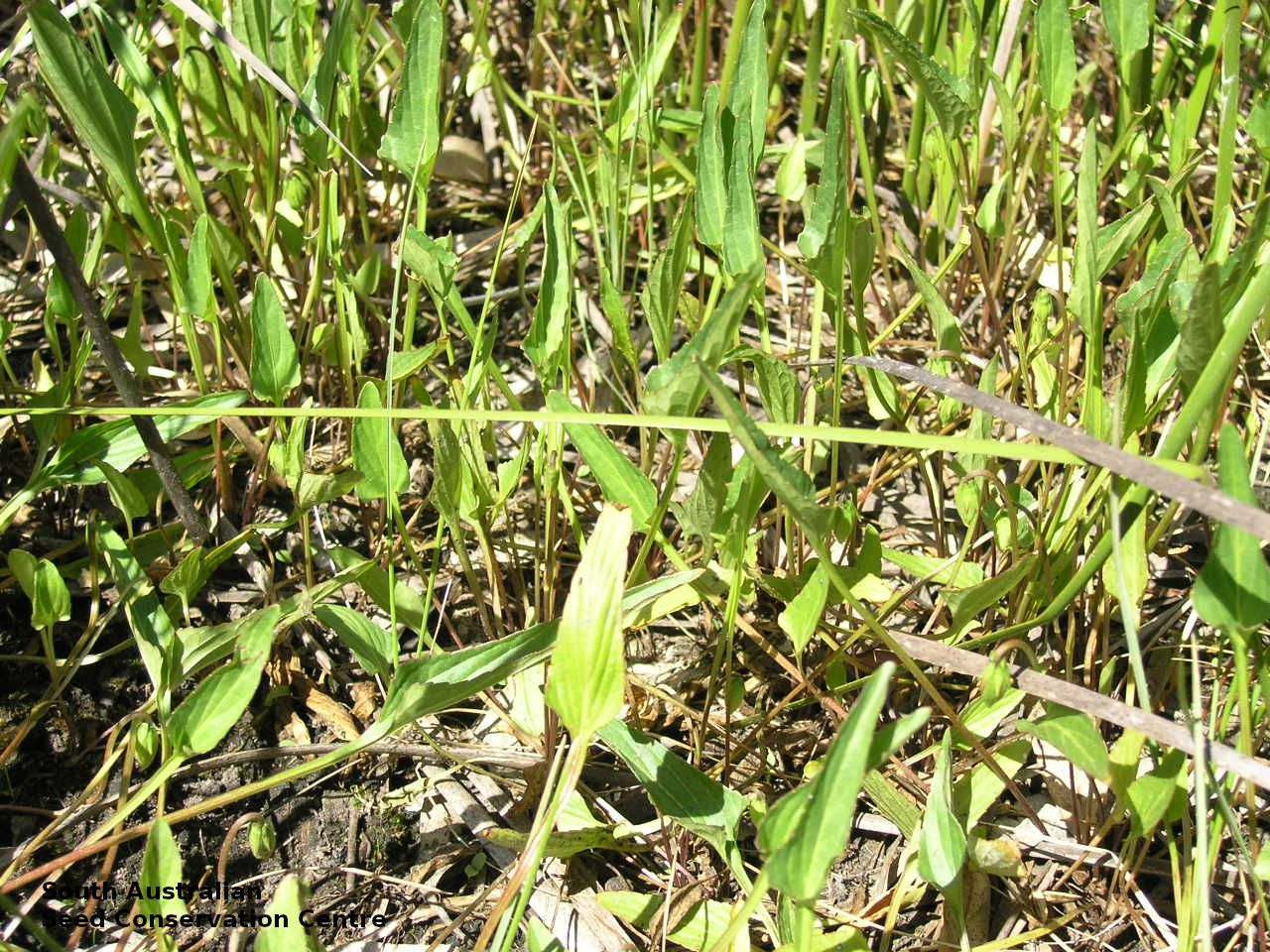
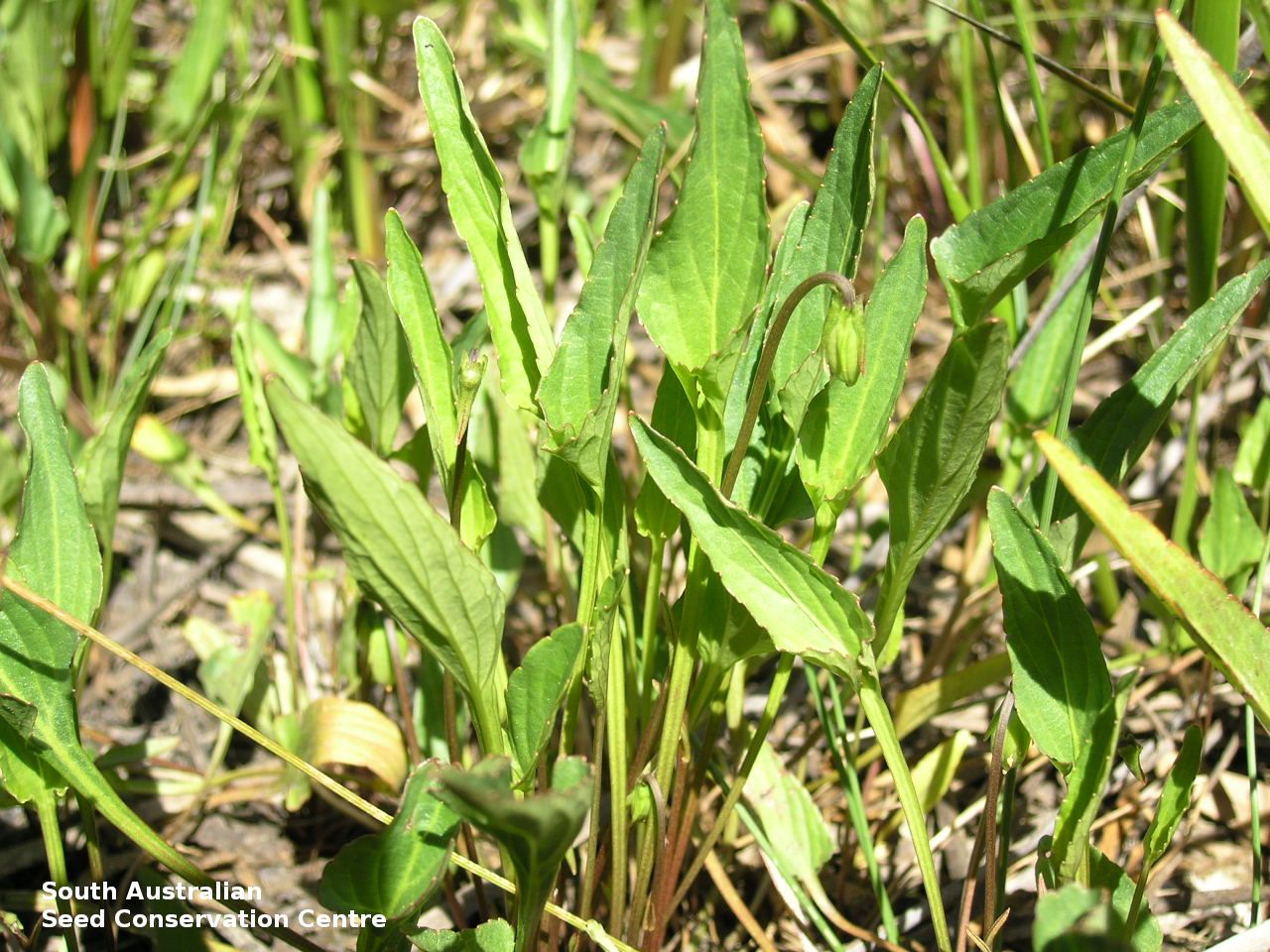
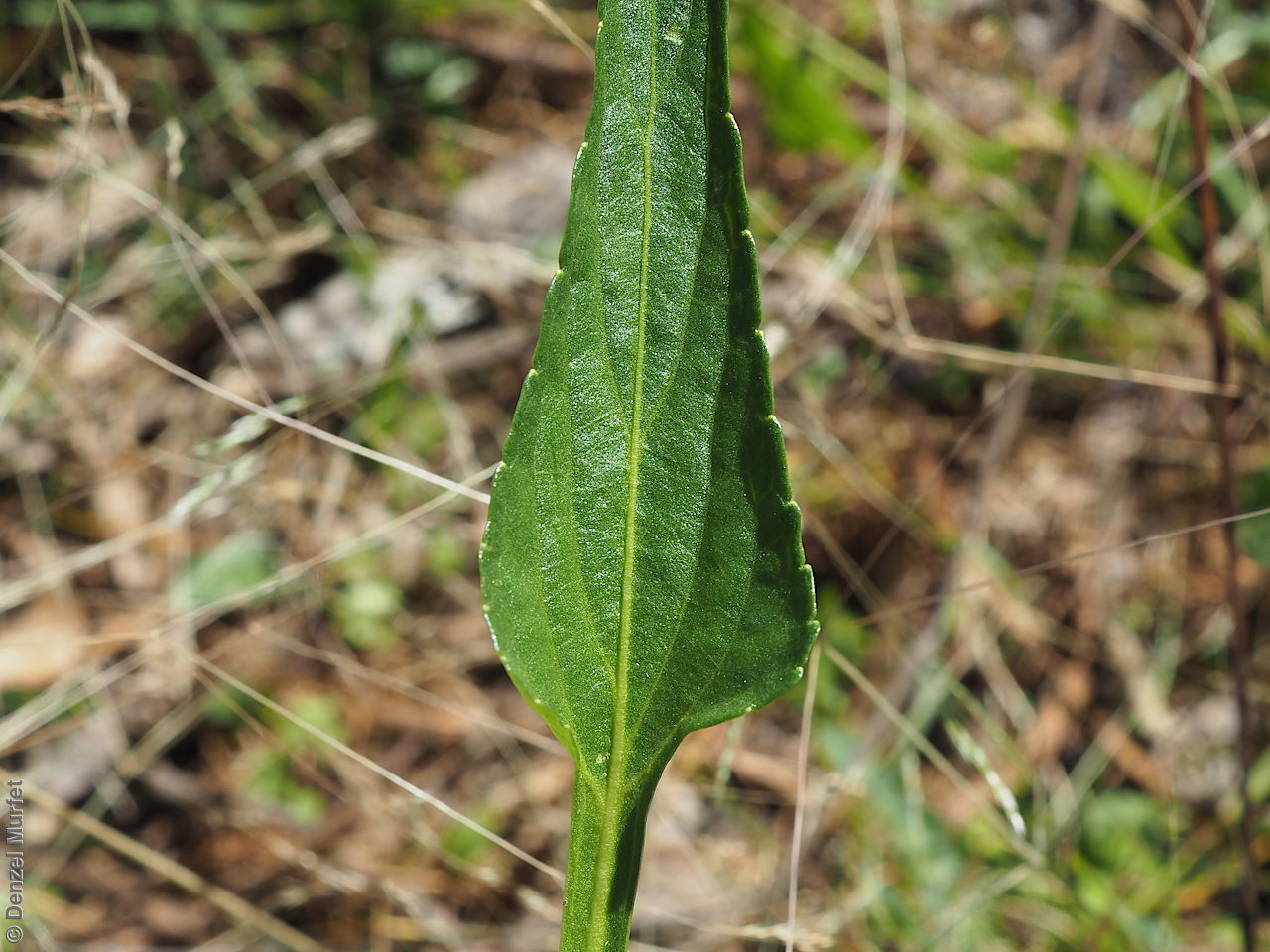
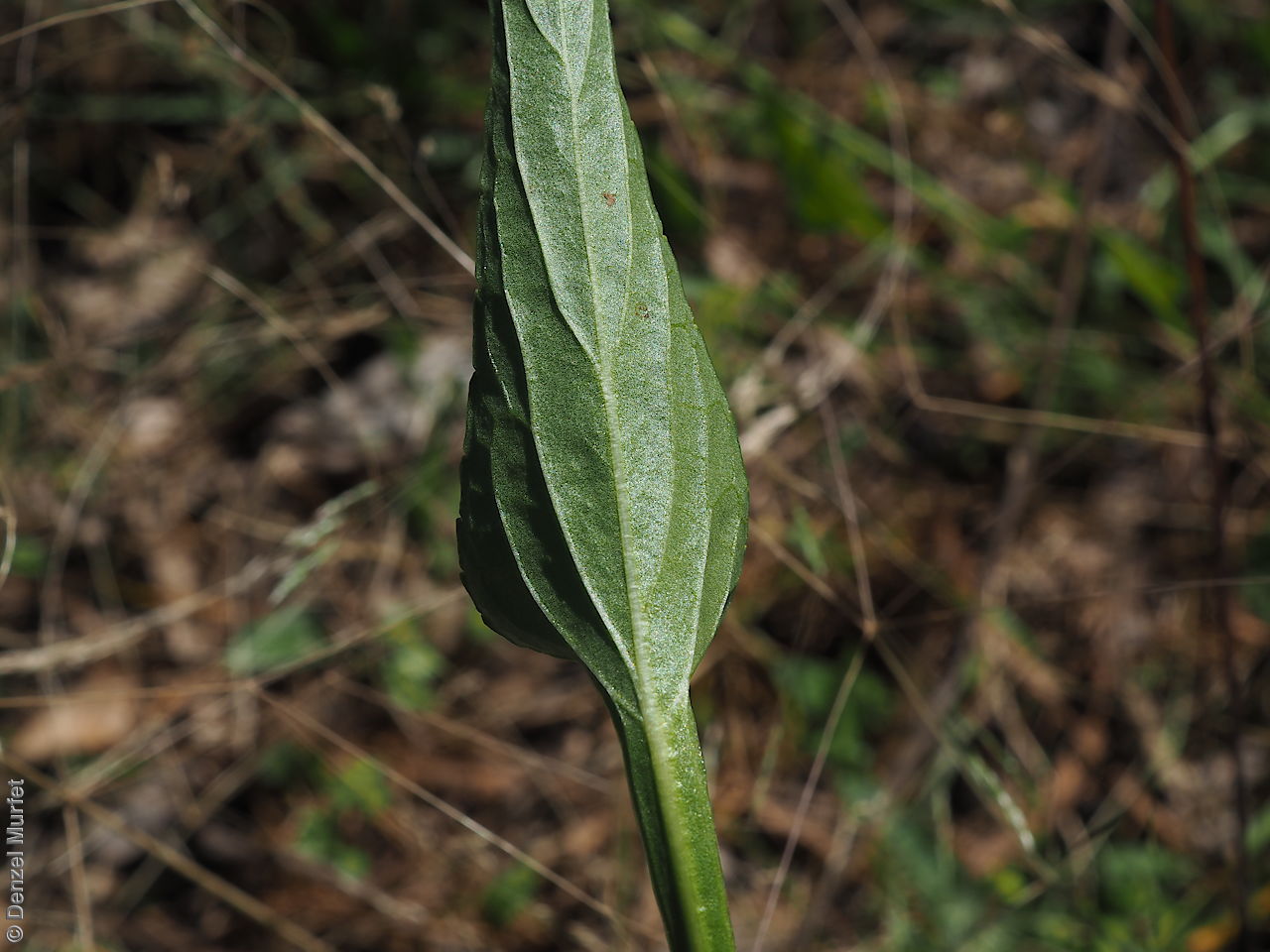
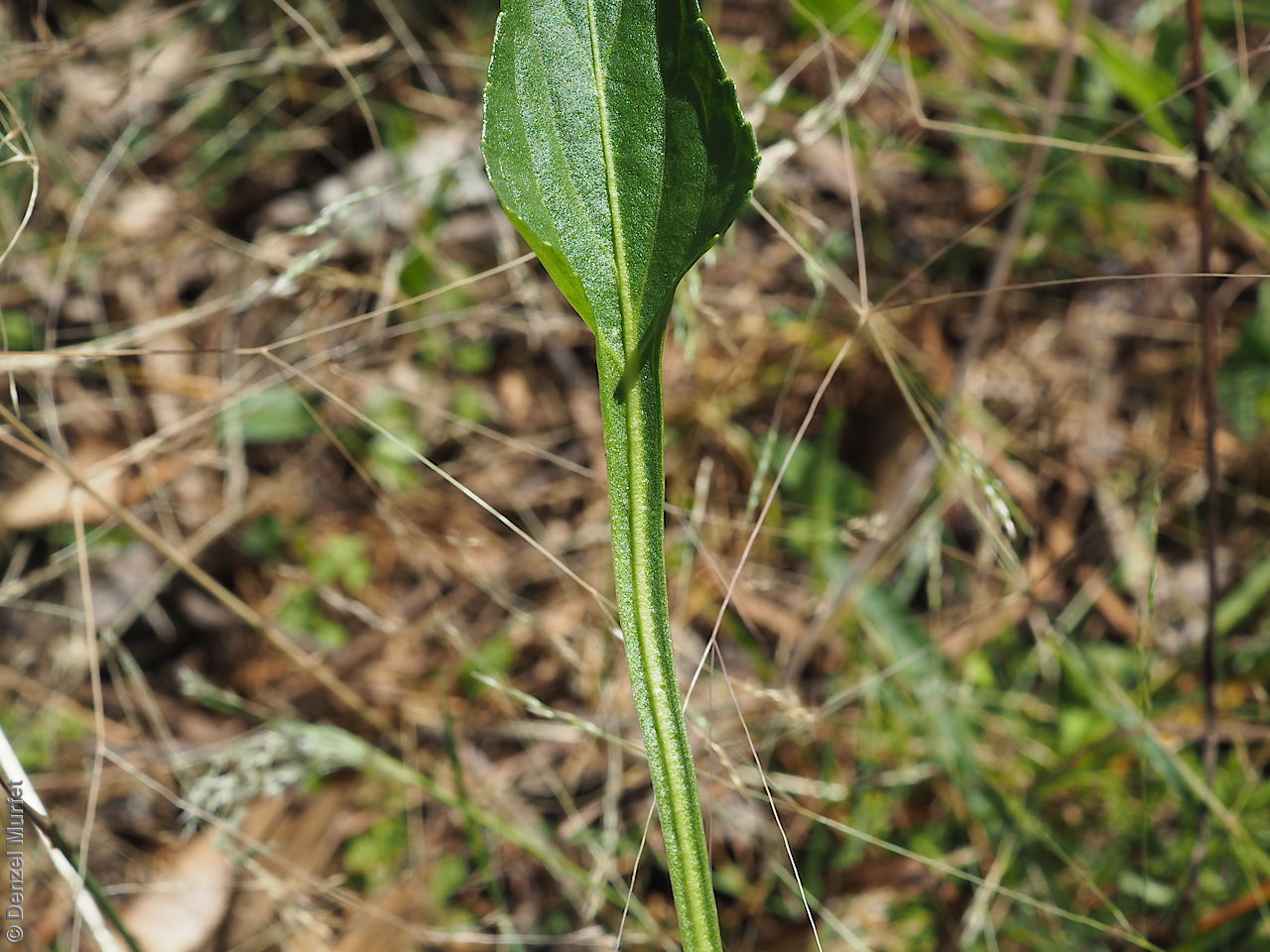
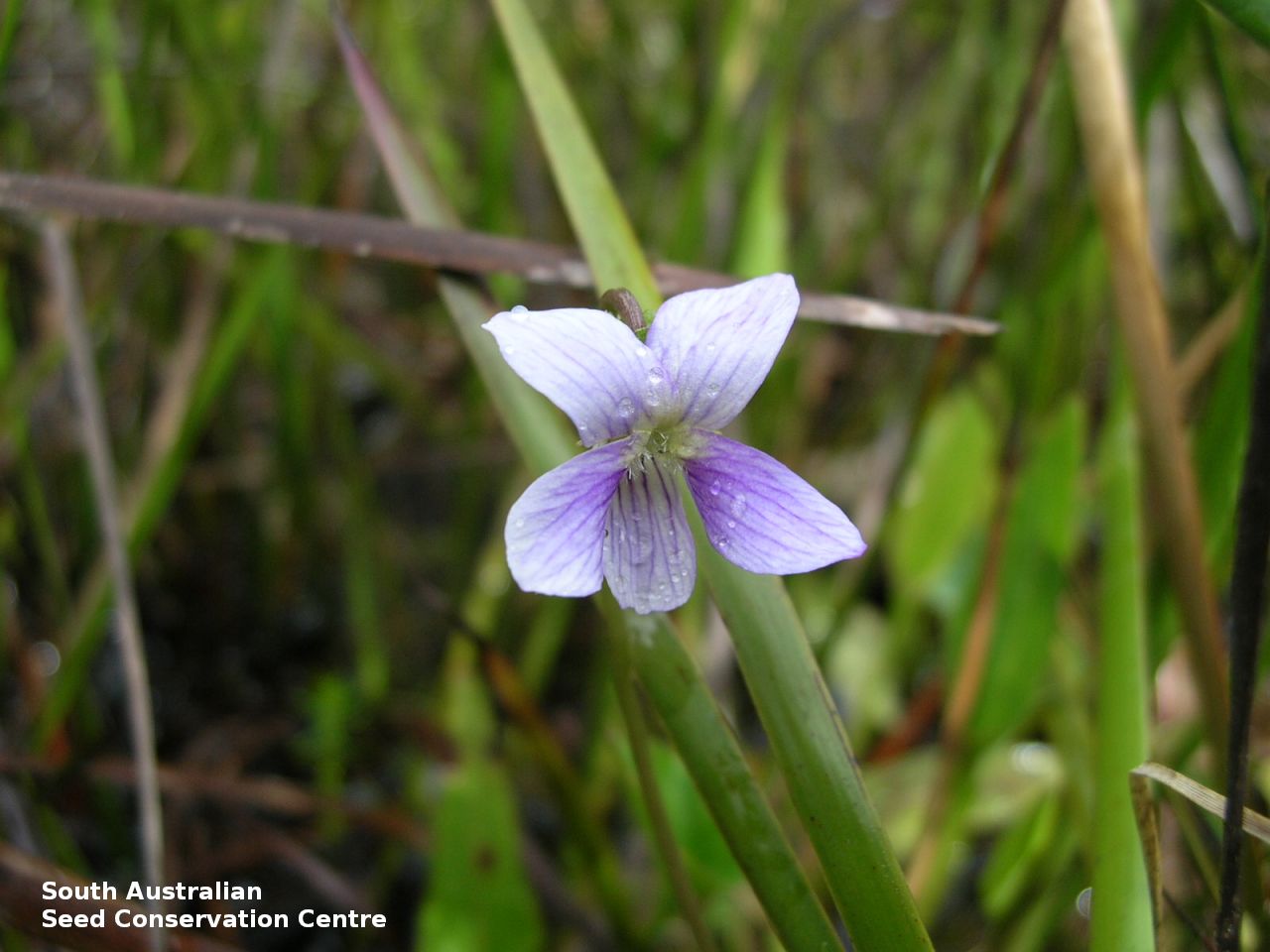
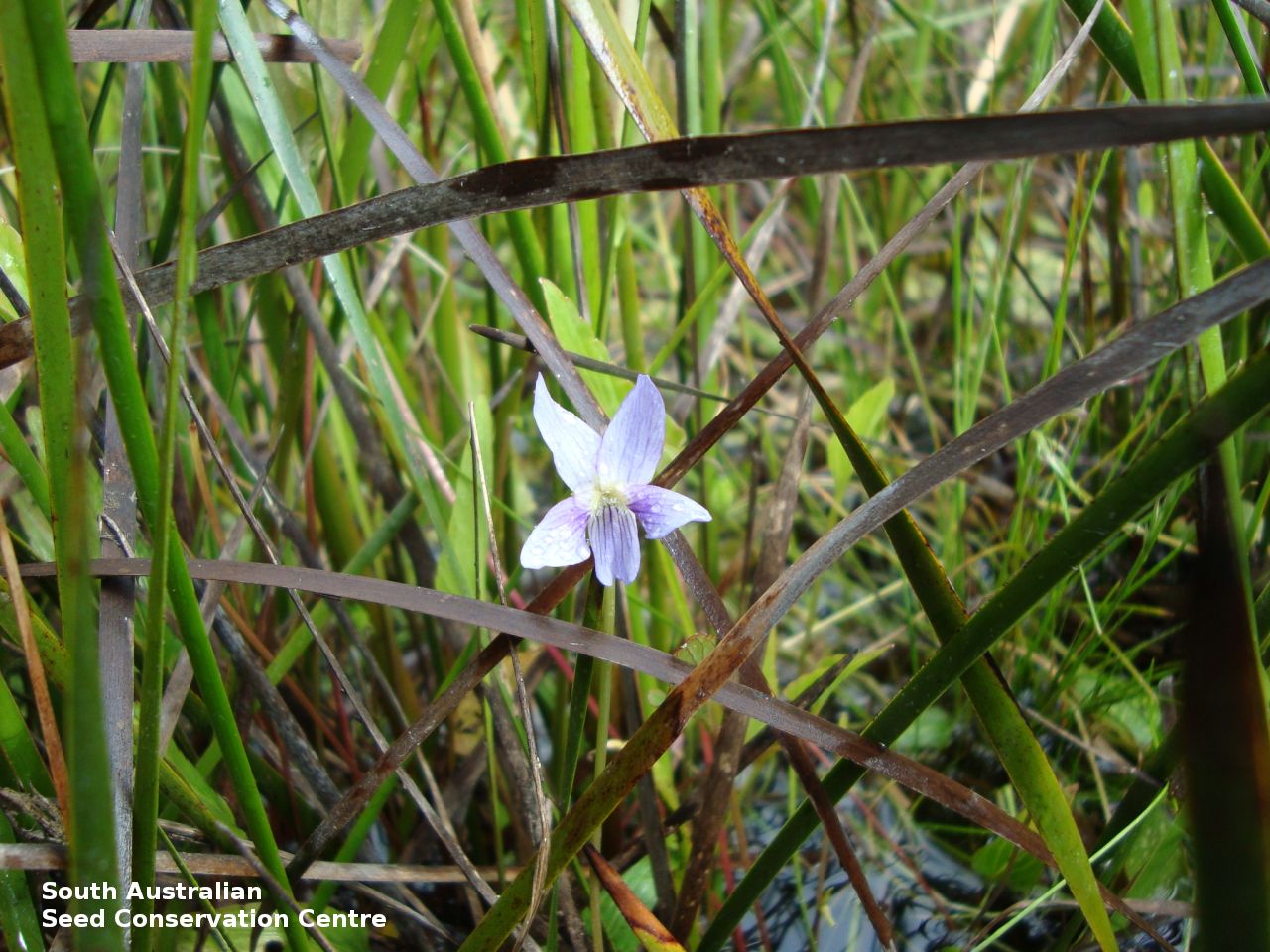
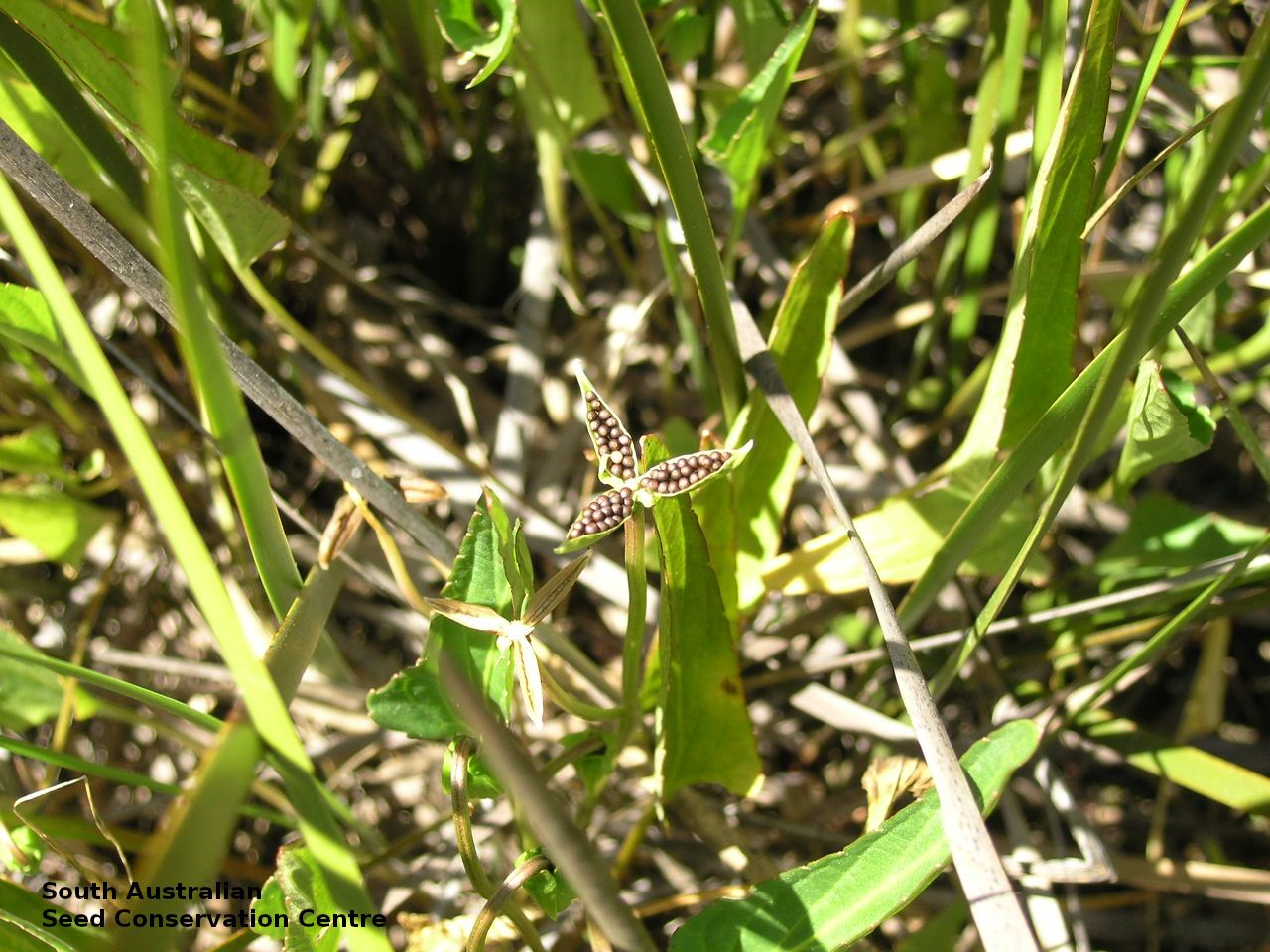
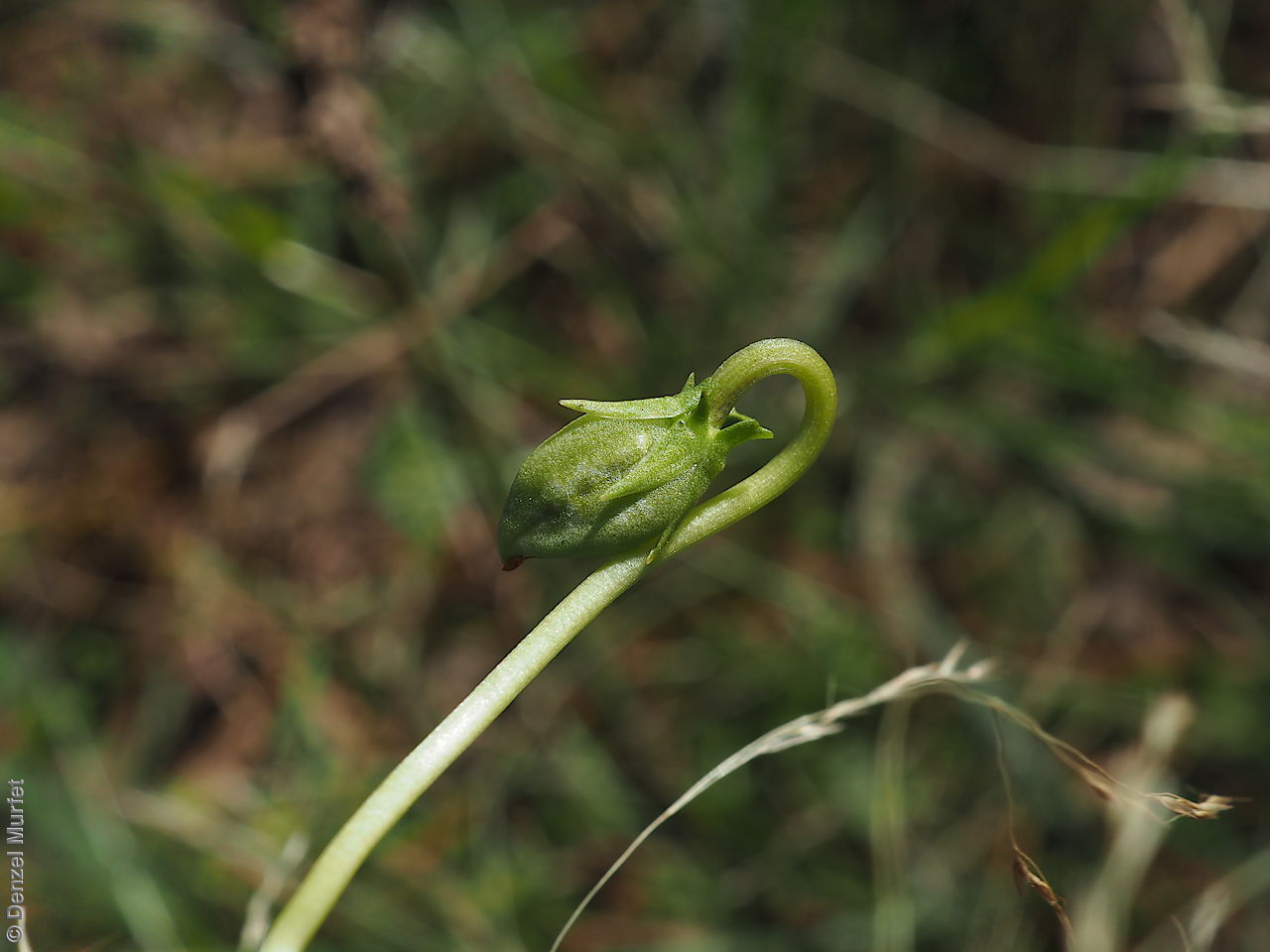
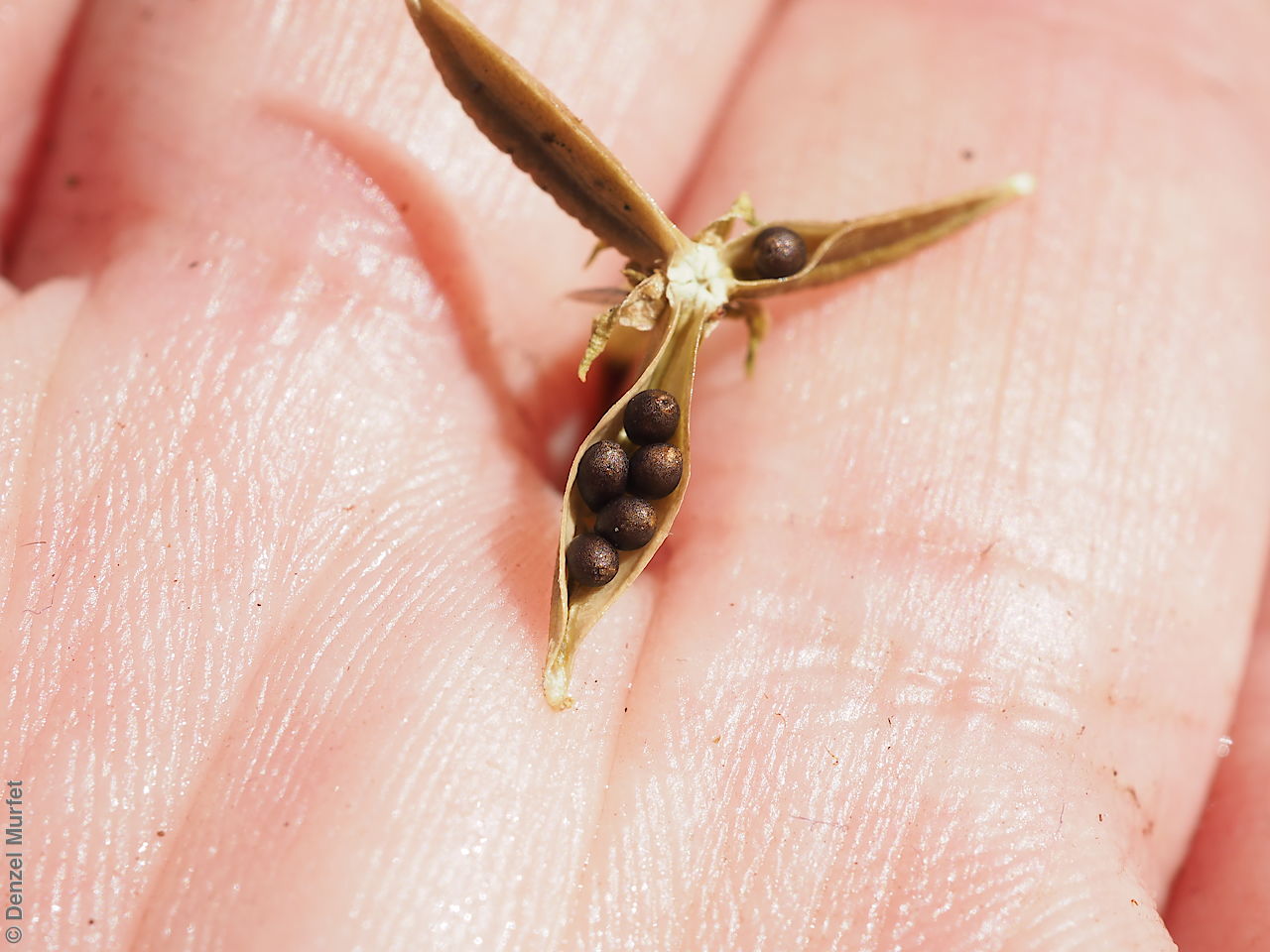
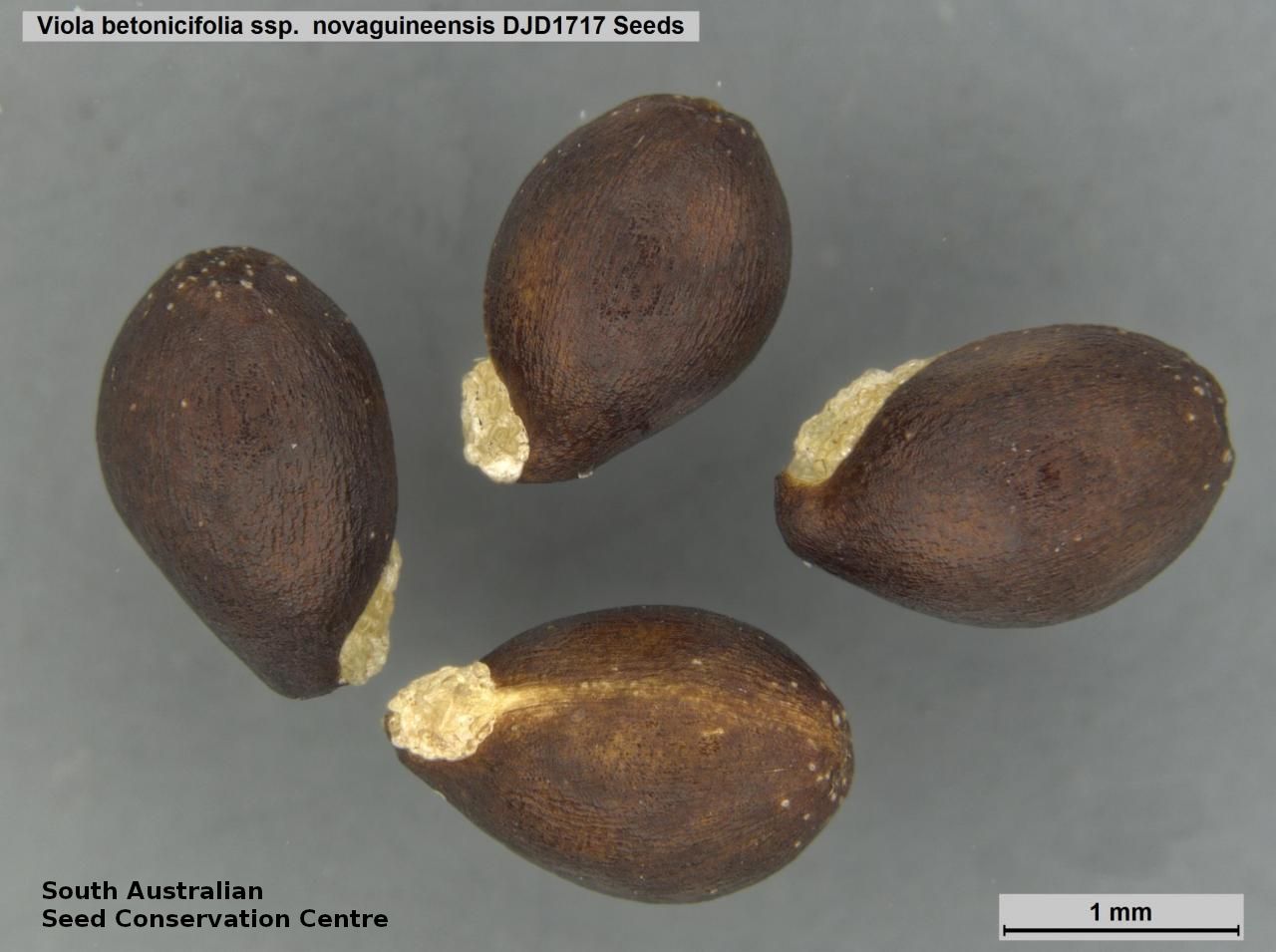


Etymology
Viola from Latin for violet, referring to the violet genus. Betonicifolia means having foliage like the plant betony (Stachys officinalis). Novaguineensis means of or from New Guinea; referring to country from which the type specimen was collected.
Distribution and status
Found in the lower South-east in South Australia, growing in red gum woodland. Also found in Queensland, New South Wales and Victoria. Native. Very rare in South Australia. Rare in Victoria. Uncommon in the other states.
Herbarium region: South Eastern
NRM region: South East
AVH map: SA distribution map (external link)
Plant description
Perennial herb with short erect, glabrous or slightly pubescent stems and stolons absent. Leaves narrowly triangular-hastate, to 8 cm long and 2.5 cm wide, hastate at base and decurrent onto petiole, shallowly crenate, especially in lower half, acute at apex, stipules linear. Flowers purplish violet, darker veined, yellow or whitish towards base on a long stalk usually above leaves. Flowering between September and January. This subspecies differ from the other subspecies found in South Australia by having a hastate leave base (truncate in Viola betonicifolia spp. betonicifolia). Fruits are brown narrowly ellipsoid capsule to 10 mm long, splitting into to 3. Seeds are small dark brown ovoid seed to 2 mm long and 1.3 mm wide. Seed embryo type is spatulate fully developed.
Seed collection and propagation
Collect seeds between November and February. Collect capsules that are maturing, drying and turning pale brown with brown seeds inside. Keep an eye on the capsules as they can ripen and split open quickly. Place the capsules in a tray and cover with paper to prevent seeds popping out and leave to dry for a week. Then rub the capsules gently with your hands to dislodge the seeds. Use a sieve to separate the unwanted material. Store the seeds with a desiccant such as dried silica beads or dry rice, in an air tight container in a cool and dry place. From one collection, the seed viability was high, at 100%. This species has physiological dormancy that need to be overcome for the seed to germinate.
| Location | No. of seeds (weight grams) | Number of plants | Date collected | Collection number Collection location | Date stored | % Viability | Storage temperature |
|---|---|---|---|---|---|---|---|
| BGA | 3,900 (4.75 g) | 50+ | 8-Jan-2008 | TST341 South Eastern | 19-Sep-2008 | 100% | +5°C, -18°C |
| MSB | 1,300 (1.26 g) | 30-40 | 10-Jan-2010 | DJD1717 South Eastern | 60% | ||
| BGA | 750 (0.85 g) | 50 | 21-Jan-2019 | DJD3854 South Eastern | 24-Apr-2019 | 86% | -18°C |
Number of plants: This is the number of plants from which the seeds were collected.
Collection location: The Herbarium of South Australia's region name.
% Viability: Percentage of filled healthy seeds determined by a cut test or x-ray.